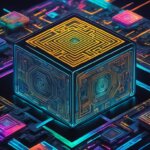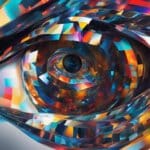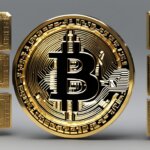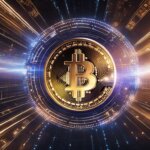Table of Contents
Welcome to our quick guide on Non-Fungible Tokens (NFTs) and their significance in the digital world. NFTs have been making headlines recently, revolutionizing the way we perceive and trade digital assets. So, what exactly is an NFT?
NFTs, short for non-fungible tokens, are unique digital assets that are created and stored using blockchain technology. Unlike cryptocurrencies such as Bitcoin, which are interchangeable, NFTs represent one-of-a-kind items that cannot be replicated or replaced.
But what makes NFTs so special? It’s their ability to represent a wide range of digital assets, including art, music, videos, trading cards, and even memes. Each NFT carries a unique signature that verifies its authenticity and records its ownership on a public, distributed database, known as the blockchain.
Imagine owning a rare piece of digital art or a limited edition collectible, with the assurance that its ownership and authenticity are securely recorded on the blockchain. NFTs enable creators to be credited for their work and receive royalties, even as their creations are sold and traded by collectors.
NFTs are bought and sold on specialized platforms called NFT marketplaces, where individuals can use cryptocurrency or credit/debit cards to transact. The ownership of an NFT is recorded transparently on the blockchain, providing a secure and traceable history of transactions.
NFTs are powered by blockchain technology, specifically the Ethereum blockchain, which serves as a distributed public ledger. This ensures that ownership verification and the unique data associated with NFTs can be easily validated.
In the following sections, we will delve deeper into the workings of NFTs, exploring how they function, how to buy and create them, their value, and the risks and future of this rapidly evolving technology.
How Do NFTs Work?
Most NFTs are based on the Ethereum blockchain, a distributed public ledger that records transactions. Each NFT is a unique token that holds valuable information, such as ownership and transfer history. The ownership and authenticity of NFTs can be easily verified and validated due to their unique data.
NFTs are primarily used to sell digital art, but they can represent any digital content. NFT marketplaces act as platforms where buyers and sellers can trade NFTs, with some marketplaces offering features like the ability to set up royalty payments for the original creators.
Here’s a breakdown of how NFTs work:
- NFTs are created using the Ethereum blockchain.
- Each NFT contains unique data that verifies ownership and transfer history.
- NFTs can represent various forms of digital content, such as artwork, music, videos, and more.
- NFT marketplaces provide a platform for buying, selling, and trading NFTs.
- Some marketplaces offer additional features, like royalty payments for creators.
With NFTs, artists and creators can monetize their work in the digital realm, while buyers can own unique digital assets and support their favorite artists.
Ownership Verification and Unique Data
The Ethereum blockchain ensures ownership verification and unique data for each NFT. It acts as a secure and transparent ledger that records every transaction and validates the authenticity of the NFT. This provides a reliable and immutable record of ownership, granting both creators and buyers peace of mind.
“With the Ethereum blockchain, NFTs revolutionize digital ownership, providing a way to prove authenticity, track ownership, and offer unique experiences to collectors.”
The unique data within an NFT sets it apart from other tokens. Each NFT is specifically linked to a digital item, whether it’s a painting, video, or any other form of digital content. This unique data includes metadata like the artist’s name, creation date, and additional information that makes the NFT one-of-a-kind.
NFT Marketplaces
NFT marketplaces are online platforms where buyers and sellers can find, trade, and sell NFTs. These marketplaces play a crucial role in the NFT ecosystem by providing a centralized hub for NFT transactions.
Some popular NFT marketplaces include:
- OpenSea
- Rarible
- SuperRare
These marketplaces offer a wide range of NFTs, allowing users to explore and discover unique digital assets. They provide features such as browsing, bidding, and instant buying options, making it easy for collectors to find and acquire NFTs.
Furthermore, NFT marketplaces often allow creators to earn royalties from secondary sales. This means that whenever an NFT is resold, the original creator receives a percentage of the sale price, providing ongoing revenue and support for artists.
How to Buy and Make NFTs
To enter the world of NFTs, individuals need to navigate through the process of buying and creating these unique digital assets. This section will guide you through the necessary steps, providing insights into setting up a digital wallet, connecting to an NFT marketplace, and exploring exciting opportunities for creators and collectors.
Firstly, to buy an NFT, you’ll need to create a digital wallet. This wallet serves as your secure digital vault for storing and managing your NFTs. It’s important to choose a reputable wallet provider that supports the blockchain technology used by the NFT marketplace you wish to use.
Once you have your digital wallet, you’ll need to connect it to a NFT marketplace. Most NFT transactions occur within these specialized marketplaces, where NFTs are bought, sold, and traded. The marketplace you choose may accept various forms of payment, with cryptocurrency being the most common method. However, some platforms also allow credit/debit card transactions.
Minting your own NFTs involves the process of creating and registering your unique digital assets on the blockchain. To get started, you’ll need to select a digital asset that you’d like to transform into an NFT. This could be digital art, music, videos, or any other digital content that holds value to you.
Selecting a blockchain technology is the next step in the minting process. The majority of NFTs are built on the Ethereum blockchain, due to its widespread adoption and support for smart contracts. However, other blockchains such as Binance Smart Chain and Flow are also gaining popularity among NFT creators.
After choosing the blockchain, you’ll need to set up your digital wallet within the chosen blockchain ecosystem. This allows you to manage and interact with your NFTs on the specific blockchain.
Finally, you’ll need to upload your chosen digital asset to an NFT marketplace for minting. This process converts your digital content into a unique, non-fungible token with verifiable ownership and authenticity on the blockchain.
Once your NFT is minted, you have a range of opportunities to explore. You can choose to keep it in your digital wallet as a digital collectible or use it for various purposes such as selling it through a fixed price listing or participating in an auction. Some creators may even choose to give away their NFTs to fans or use them as rewards within their communities.
NFTs offer a plethora of opportunities for creators to monetize their digital assets and collectors to own unique digital items. The dynamic NFT market continuously evolves, presenting new ways to engage with digital art, music, and other digital content.
Benefits of NFTs:
- Uniqueness: Each NFT is distinct and cannot be replaced or replicated.
- Authenticity: NFTs provide an immutable record of ownership and provenance.
- Ownership: NFT owners have exclusive control and usage rights over their digital assets.
- Creation: NFTs allow creators to monetize their digital work and connect directly with fans.
- Marketplace: NFT marketplaces offer a global platform for buying, selling, and trading digital assets.
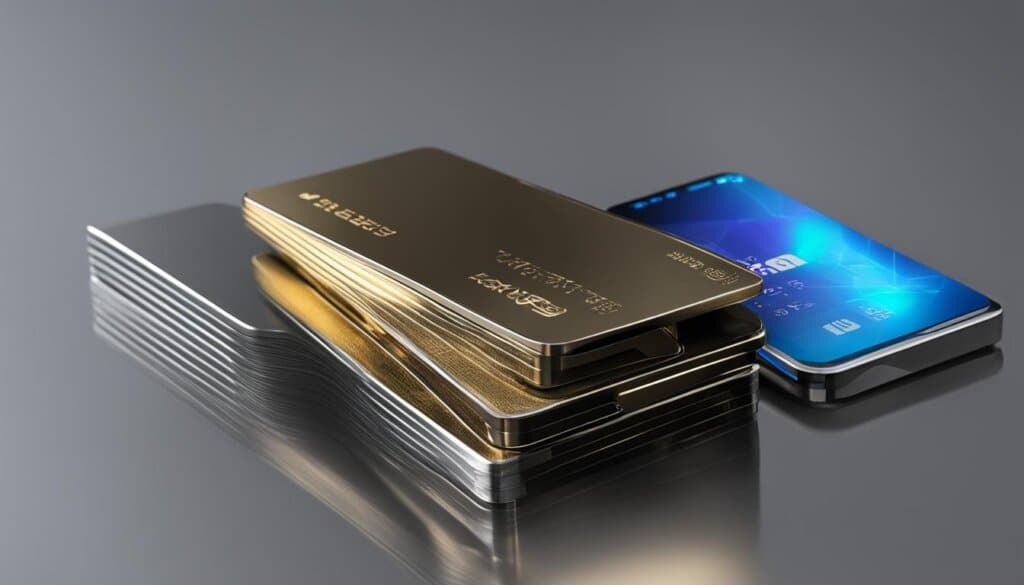
| Step | Process |
|---|---|
| 1 | Create a digital wallet |
| 2 | Connect the wallet to an NFT marketplace |
| 3 | Choose a digital asset to convert into an NFT |
| 4 | Select a blockchain technology |
| 5 | Set up a digital wallet within the chosen blockchain ecosystem |
| 6 | Upload the digital asset to an NFT marketplace for minting |
| 7 | Explore options for keeping, selling, auctioning, or gifting the minted NFT |
Why are NFTs Valuable?
NFTs, just like physical art, hold value due to their rarity and demand. The value of an NFT is determined by the scarcity of the item and the level of demand in the market. Similar to the bidding process in traditional auctions, NFTs are often sold through a bidding process where the highest bidder sets the price.
Some NFTs have fetched staggering amounts, reaching millions of dollars, particularly those associated with renowned artists or well-known brands. These high-value transactions highlight the growing recognition and appreciation for digital art in the marketplace.
NFTs play a vital role in the metaverse, where virtual worlds and digital experiences converge. They represent ownership of unique digital assets and have the potential to revolutionize the way we buy, sell, and engage with virtual objects and experiences.
The Value of Rarity
“The rarity of an NFT is a key factor in determining its value. Collectors are drawn to the exclusivity and scarcity of owning a unique digital asset.”
Rarity fuels the demand for NFTs. Creators strategically limit the availability of their digital art, further enhancing its value and desirability. As collectors seek to own something unique and limited, the price of rare NFTs continues to rise.
Digital Art in Focus
“NFTs have opened up new avenues for artists to monetize their creations and establish a direct connection with their audience.”
Digital art has gained significant traction in the NFT market. Artists can now sell their artwork directly to collectors, bypassing traditional intermediaries. This democratizing effect empowers artists and allows them to retain more of the value that their creations generate.
The Potential of the Metaverse
“NFTs are at the forefront of the emerging metaverse, shaping the future of digital ownership and interaction.”
As we continue to immerse ourselves in the virtual realm, NFTs provide a tangible way to own and showcase digital assets within the metaverse. The metaverse represents a digital universe where people can explore, socialize, and participate in various activities. NFTs bring a sense of authenticity and value to this virtual space, creating endless possibilities for creators and collectors alike.
| Key Factors | Impact on NFT Value |
|---|---|
| Rarity | Increases value due to exclusivity and scarcity. |
| Demand | High demand drives up prices in the market. |
| Bidding Process | Results in competitive pricing based on the highest bid. |
| Digital Art | Artists can monetize their creations directly, increasing their value. |
| Metaverse | NFTs facilitate digital ownership and interaction within virtual worlds. |
Risks and Future of NFTs
Like any new technology, the rise of NFTs comes with its fair share of risks and challenges. One of the main concerns is the potential for fraud within the NFT market. As NFTs gain popularity, there is an increased risk of scams and counterfeit tokens being sold. It is crucial for platforms and marketplaces to implement strict verification and authentication processes to protect buyers and ensure the legitimacy of NFTs.
Another challenge that NFTs face is their environmental impact. The process of minting and trading NFTs on the blockchain consumes a significant amount of energy and contributes to carbon emissions. To ensure sustainable development, it is essential for the NFT industry to explore environmentally friendly alternatives and adopt more eco-conscious practices.
Inclusivity is another important aspect that needs attention in the NFT space. Currently, the high costs associated with creating and purchasing NFTs can limit access for artists and collectors from marginalized communities. It is vital for the industry to address these barriers and create opportunities for underrepresented voices to participate and thrive in the NFT market.
Despite these risks and challenges, NFTs are gaining momentum and attracting interest from various sectors. More brands, celebrities, and artists are recognizing the value and potential of NFTs for showcasing and monetizing their digital creations. The future of NFTs holds promise for mainstream adoption, with opportunities for integration into industries such as gaming, music, and virtual reality. As responsible development practices are implemented and sustainability becomes a priority, NFTs have the potential to reshape the digital landscape and revolutionize the way we interact with and own digital assets.
FAQ
What is an NFT?
An NFT, or non-fungible token, is a digital asset that represents a unique and one-of-a-kind item. It is created using blockchain technology and cannot be replaced or interchanged due to its unique properties.
How do NFTs work?
NFTs are based on the Ethereum blockchain, which is a distributed public ledger that records transactions. Each NFT is a unique token that holds valuable information such as ownership and transfer history. NFTs are bought and sold on specialized platforms known as NFT marketplaces.
How can I buy and make NFTs?
To buy an NFT, you need to set up a digital wallet and connect it to a third-party NFT marketplace. Most transactions are made using cryptocurrency, although some marketplaces accept credit/debit cards. To make your own NFT, you need to choose a digital asset, select a blockchain technology, set up a digital wallet, and upload the file to a marketplace to mint the NFT.
Why are NFTs valuable?
NFTs are valuable due to their rarity and demand. The value of an NFT is determined by the level of demand and the scarcity of the item. Some NFTs have sold for millions of dollars, particularly those associated with well-known artists or brands.
What are the risks and future of NFTs?
There are risks and challenges associated with NFTs, including fraud, environmental impact, and inclusivity. However, responsible and sustainable development of NFTs can address these concerns. The future of NFTs holds the potential for mainstream adoption and integration into various industries and sectors.



